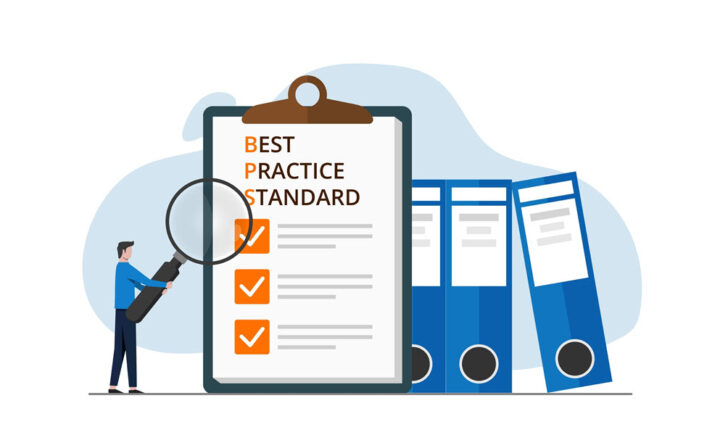Why I use only SharePoint Out of the Box functionality
If you have been following my blog for some time, you are aware of the fact that I am a staunch supporter of SharePoint out of the box approach. When I create sites for my clients, whether they are Intranet sites or sites used for document management, I never utilize any custom code or 3rd party tools/web parts to achieve the objective. Everything I do for my clients is using exclusively functionality that is already available in SharePoint. I also do not use any custom coding or development. I am so serious about the above approach that this has become my business model and philosophy. And on my blog, all the posts describe SharePoint OOTB only.
This philosophy is also something I constantly preach to my clients and followers. There are many reasons for this, and I thought today I would summarize them all for you.
What is SharePoint Out of the Box functionality?
Also known simply as SharePoint OOTB, the philosophy revolves around one simple rule: You just configure the functionality already available in SharePoint to achieve the objective, whether you build an Intranet or a Document Management system. That means:
- No Custom coding used
- No 3rd party web parts or add-ons
- No Custom Themes
- No PnP or PowerShell scripting
- No integration with any other 3rd party systems
Below, I outline ten reasons why this philosophy is a winner.
Reason # 1: Cost
The first one is pretty obvious. You already pay for a Microsoft 365 subscription, and it is very likely that your 3rd party web part, or a custom Intranet theme costs money as well. Moreover, if you decide to do custom development, you have to hire a developer, and they are not cheap either.
Reason # 2: Timeline
When you do custom development on your SharePoint environment or decide to proceed with the third-party theme or web parts, there is no doubt, you will have a longer timeline. You have to factor
- Additional research
- Gap analysis
- Additional configuration or integration (if applicable)
- Custom development (if applicable)
- User or Quality Assurance testing (which is very time-consuming)
- Additional training
Reason # 3: Expertise
It is hard enough to find someone with proper SharePoint expertise. With custom coding and 3rd party widgets, you must ensure your staff has adequate expertise with those tools/apps, which is always a considerable challenge.
Reason # 4: No need to worry about warranty or support
This reason is fundamental. With SharePoint Out of the Box, you do not need to worry about warranty and support – because everything is out of the box, it will work! And Microsoft is already doing sufficient testing on their end to ensure SharePoint Online stays functional and is working with its regular updates. With 3rd party tools and custom coding – it is another story. You would need to have a proper warranty and support for years to come and probably pay additional money for it!
Reason # 5: Training
This one is super important, too. There are plenty of live training and on-demand resources available out there related to the use of SharePoint, Teams, and OneDrive. When you utilize another application or custom theme – you now have to ensure users are training in that other application as well. And that might mean extra effort, additional cost, and a lengthier timeline.
Reason # 6: Mobile Apps
Remember that whatever you do in terms of customization in your SharePoint does not carry over to the mobile apps. OOTB mobile apps are already available for SharePoint, Teams, and OneDrive. And whatever you do for customizations on the desktop version does not magically make it work with those OOTB mobile apps. So keep this in mind, especially considering the fact that with a remote workforce, more and more users access content using mobile devices.
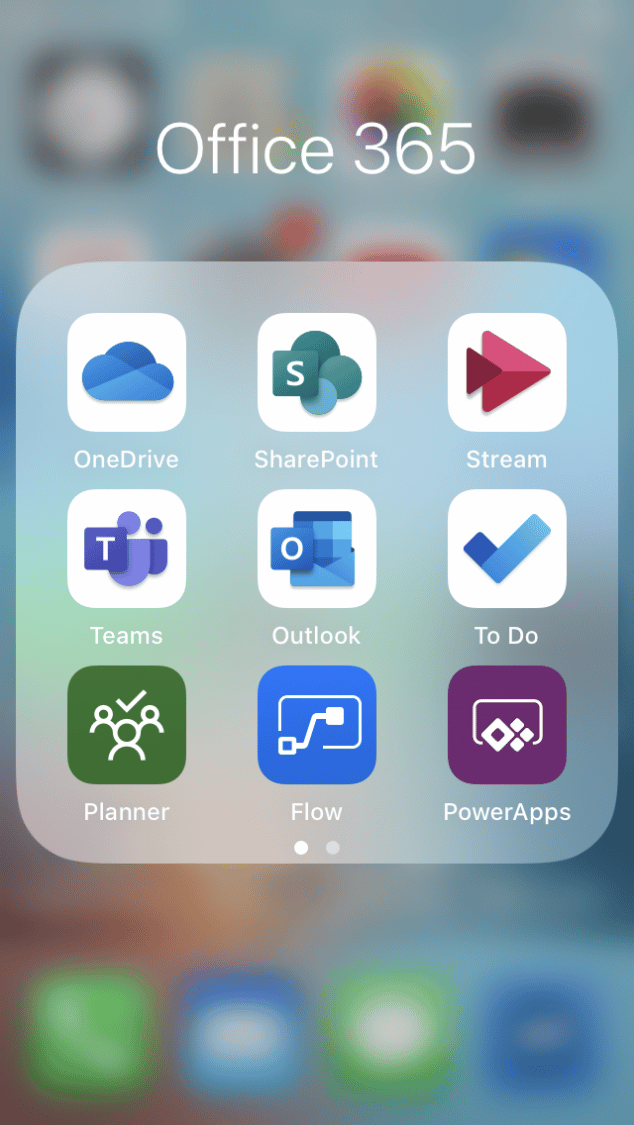
Reason # 7: New functionality is always added
Here is another fact. Lots of functionality you previously had to develop custom apps for is no longer necessary because it already exists OOTB in SharePoint. And lots of new capabilities are added as well. For example, the ability to request files in SharePoint. Previously, you probably had to develop something custom for this, and now it is available OOTB!
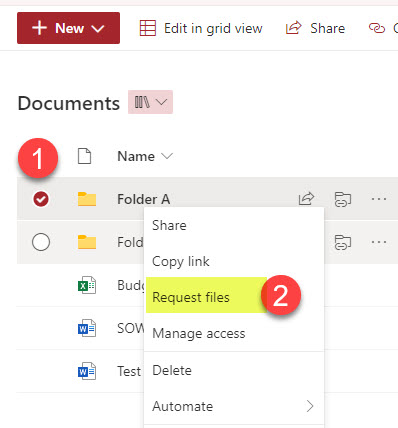
Reason # 8: Ongoing changes by Microsoft
Microsoft updates SharePoint Online all the time. You can’t believe how many times I did Live Training with my clients, and I would see a button or option that was not there just yesterday! So, one thing to always keep in mind if you venture into custom development – is to make sure your changes will not be in conflict with the changes made by Microsoft.
One noteworthy example was the roll-out of the SharePoint App Bar back in 2021. It worked flawlessly for organizations that stuck to a SharePoint OOTB configuration. However, for some who did custom development, this turned into a nightmare. The SharePoint App bar, which always appears on the left side of all SharePoint sites, ran into conflicts with the custom themes and custom navigation built for certain custom themes. As a matter of fact, and as a result of the above, Microsoft, for some time, allowed for temporary disablement of the SharePoint App Bar.
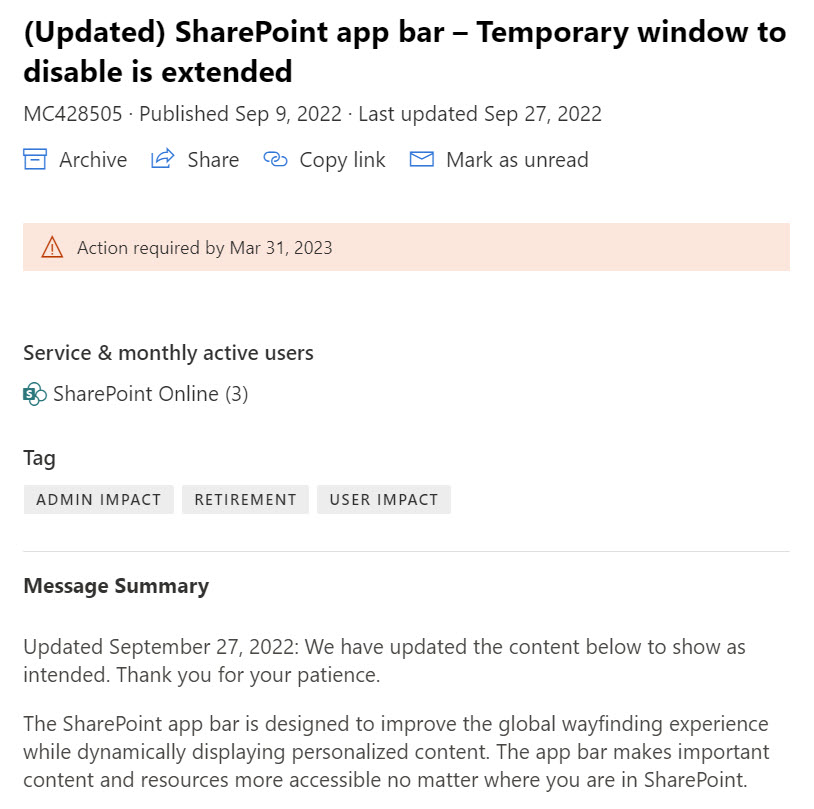
Message about SharePoint App Bar within the Microsoft 365 Message Center
Reason # 9: Impact of Power Automate/Power Apps
Another thing that significantly impacted the world of custom development and 3rd party apps was the introduction of low-code solutions like Power Automate and Power Apps. While I do not consider using those apps as OOTB solutions since you kind of have to code, several workflows already exist for you to use OOTB. Examples include
- Document Approval (Request sign-off)
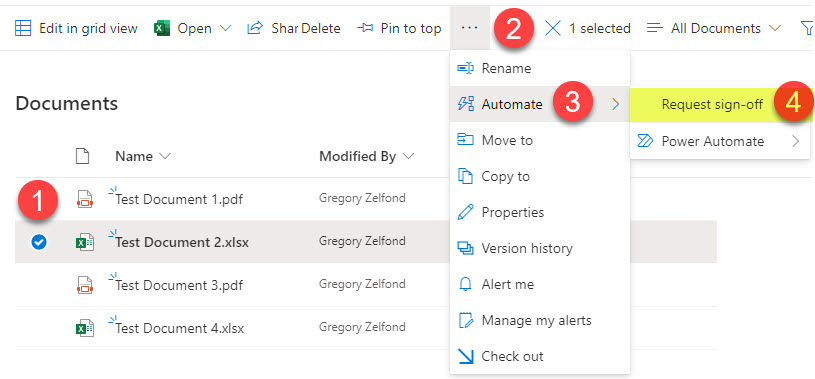
- Page/News Post approval
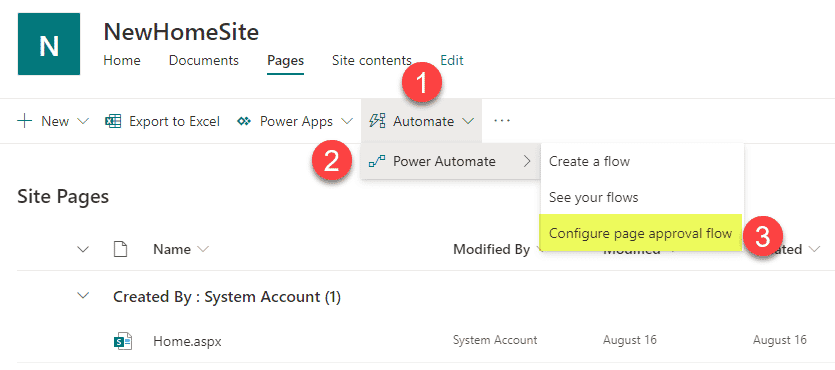
- Set a reminder workflow
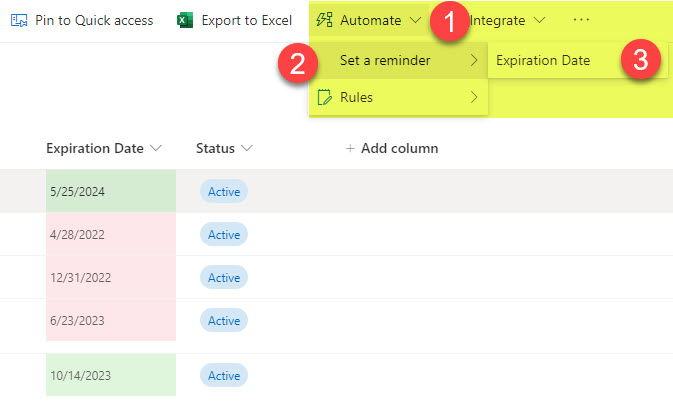
In addition, many OOTB templates exist in Power Automate and Power Apps for various use cases and scenarios.
Reason # 10: Flat Information Architecture
Finally, another thing to remember with custom development and 3rd party web parts is that we have the concept of Flat Information Architecture in modern SharePoint. What that means is that what used to be a site collection with subsites are now separate top-level sites. In other words, custom development on one modern site does not translate into another. Or, if you installed a nice-looking theme on one site, it won’t be available on other sites.
In conclusion
So, hopefully, I provided enough reasons to consider and stick to an Out-of-the-box approach. That said, I am not necessarily saying that you should avoid custom development or 3rd party apps and web parts. Some use cases might warrant it, especially for larger organizations that need such integrations with 3rd party CRMs, systems, and other software or simply need functionality that is not available in SharePoint. But, you should definitely first get familiar with what is already available in SharePoint and see if it will work for you. And, of course, be familiar with the consequences I outlined in this article.



